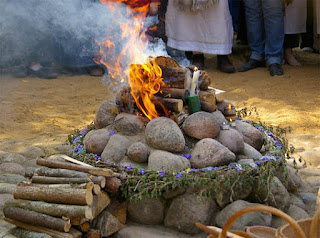A few days ago, we lost a tireless champion of the rights of the Indigenous Peoples of North America. Retired South Dakota United States Senator James Abourezk, the architect of the Indian Child Welfare Act (ICWA), passed away at his home in Sioux Falls on Friday, Feb. 24 on his 92nd birthday. James George Abourezk was born in 1931 in Wood, South Dakota, the son of Lebanese immigrants. Growing up on the Rosebud Indian Reservation, he spoke only Arabic at home and did not learn English until he went to elementary school.
After high school graduation in 1948, Abourezk served in the US Navy during the Korean War. Following military service, he earned a degree in civil engineering from the South Dakota School of Mines in Rapid City in 1961, and worked as a civil engineer in California, before returning to South Dakota to work on the Minutemen missile silos. At the age of 32, he decided to pursue law, and earned a J.D. degree from University of South Dakota School of Law in Vermillion in 1966.
Abourezk began a legal practice in Rapid City, South Dakota, and joined the Democratic Party. He ran in 1968 for Attorney General of South Dakota but was defeated by Gordon Mydland. In 1972, Abourezk was elected to the U.S. Senate, where he served from 1973 to 1979, after which he chose not to seek a second term. He was the first chair of the Senate Committee on Indian Affairs. His legislative successes in the Senate included the 1975 Indian Self-Determination and Education Assistance Act, as well as the American Indian Religious Freedom Act of 1978. The American Indian Religious Freedom Act gives federal protection to the traditional religions of the American Indian, Eskimo, Aleut, and Native Hawaiians.
Abourezk's signature legislation was the Indian Child Welfare Act (ICWA, 1978), designed to protect Native American children and families from being torn apart. Native American children have been removed by state social agencies from their families and placed in foster care or adoption at a disproportionately high rate, and usually placed with non Native American families. This both deprived the children of their culture and threatened the very survival of the tribes. This legislation was intended to provide a federal standard that emphasized the needs of Native American children to be raised in their own cultures, and gave precedence to tribal courts for decisions about children domiciled on the reservation, as well as concurrent but presumptive jurisdiction with state courts for Native American children off the reservation.
In 1973, Senators Abourezk and George McGovern attempted to end the occupation of Wounded Knee by negotiating with American Indian Movement (AIM) leaders, who were in a standoff with federal law enforcement after demanding that the federal government honor its historical treaties with the Oglala Sioux nation. The Wounded Knee Occupation began on February 27, 1973 when about 200 Oglala Lakota and followers of AIM seized and occupied the town of Wounded Knee, South Dakota. The occupation lasted for a total of 71 days, during which time two Lakota men were shot to death by federal agents and several more were wounded. It was a key moment in the struggle for Native American rights.
The summer after the occupation of Wounded Knee, Abourezk introduced the American Indian Policy Review Commission Act, which created the eleven-member commission to study legislation with the goal of addressing key issues in Indian Country. He served as its chairman until its landmark report was published in 1977. He took the gavel as chairman of the Select Committee on Indian Affairs from its creation in 1977 to 1979, when he left the Senate.
In 1980, Abourezk founded the American-Arab Anti-Discrimination Committee, a grassroots civil rights organization. In 1989, he published his Advise and Dissent: Memoirs of South Dakota and the U.S. Senate. He was the co-author, along with Hyman Bookbinder, of Through Different Eyes: Two Leading Americans -- a Jew and an Arab -- Debate U. S. Policy in the Middle East (1987).
After his retirement from the Senate, Abourezk worked as a lawyer and writer in Sioux Falls, South Dakota. He continued to be active in supporting tribal sovereignty and culture. Since 2005, he chaired the Lakota People's Law Project Advisory Committee. The Lakota People's Law Project is committed to defending the rights of South Dakota's Native American families, exposing the epidemic of illegal seizures of Lakota children by the state of South Dakota, working towards the structural solution to end this injustice. Just last year, Sen. Abourezk assisted their legal team in filing an amicus brief supporting ICWA with the United States Supreme Court. Later this year, the High Court could overturn the senator's landmark piece of federal legislation -- and that poses an imminent threat to Native families and sovereignty.



